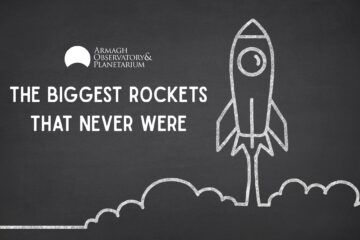When Apollo 15 astronauts David Scott and Jim Irwin touched down near the lunar Appenine mountains in the summer of 1971, they brought along a rover to aid them in their exploits. The use of this Lunar Roving Vehicle – or LRV as it was called – was the first time humans drove a vehicle on the moon and also marked a first for the Apollo program. However, the honour of being the first vehicle to roam across the surface of another world must go to Lunokhod 1.
Designed and built in the Soviet Union, Lunokhod 1 was delivered to the lunar surface 8 months before Apollo 15 by the Luna 17 mission. The probe touched down at 03:47 GMT on the 17th November 1970 on the western part of the Sea of Rains (actually a bone-dry lava plain, as there has never been any rain on the Moon) on the NE quadrant of the lunar disk as seen from Earth.

Unlike the Apollo LRV, which merely served as a means of conveyance for the astronauts, L1 was a mobile laboratory bristling with scientific instruments. Over the course of the mission, these took images of the surroundings, measured the chemical and mechanical properties of moonsoil, took radiation readings and even carried a mirror to bounce laser pulses fired from observatories at Earth. The laser experiment allowed the Earth-Moon distance to be measured to an accuracy of around 20 centimetres and helped to show that the Moon is, in fact, slowly receding from the Earth.
Deisgned to operate for 3 lunar days (that is 3 months of Earth time), Lunoknod 1 actually kept going for 10 months until September 1971, at which point it had travelled some 10 km or 6 mi, returned more than 20,000 TV images and performed 25 soil analyses.
Although Lunokhod 1 was driverless it was not automated but operated, in fact, by remote control from Earth. Operation of the rover was complicated by the 1.5 sec travel time for radio signals to cross the Earth-Moon distance. This meant a minimum 3-sec time delay between commanding the rover to move and observing the result through the onboard cameras. Needless to say, the rover’s itinerary had to be planned with extreme care lest the rover becomes implicated in the first off-Earth traffic accident!
This amazingly successful mission was followed two years later by Lunokhod 2. This rover lasted half as long as its predecessor, from January until May 1973, but clocked up almost 4 times the distance travelled, 37 km or 23 mi.

In 2010, Luna 17 and Lunokhod were both identified in pictures taken the previous year from NASA’s Lunar Reconnaissance Orbiter probe. These clearly showed the ramps used to deliver the rover to the surface and a multitude of tracks left by the rover wheels in the vicinity of the lander. Shortly after, stations in the USA and France successfully received laser pulses from the L1 retroreflector, allowing the scientific mission of this venerable lunar explorer to begin anew.
Further reading:
Lunokhod 1, NASA solar system exploration
Soviet Moon Images website maintained by Don P. Mitchell
Soviet Union Lunar Rovers, Lunar Reconnaissance Orbiter Camera



0 Comments